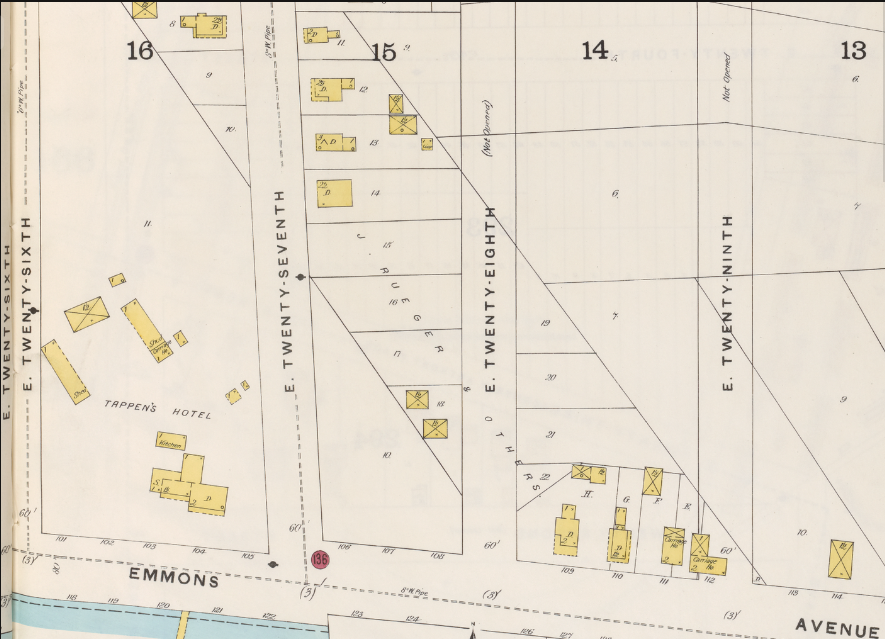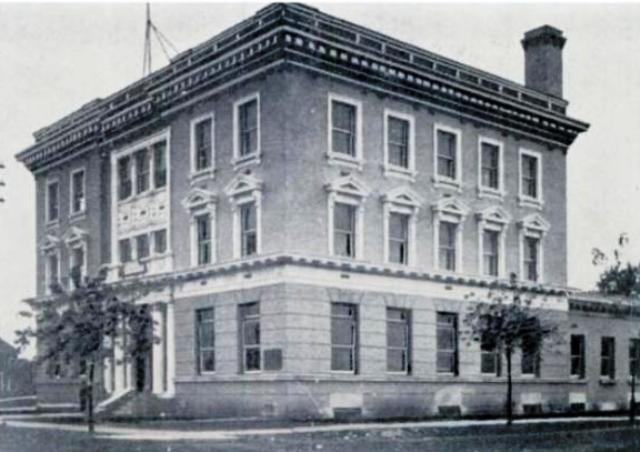
Last week, during my virtual presentation on animals of old Brooklyn with the Brooklyn Historical Society, one of the attendees asked me whether Sheepshead Bay was named for sheep. I knew that this was not the case, but I couldn’t think fast enough to recall how Sheepshead Bay got its name. There was some sort of animal involved, but not sheep…
I told the audience that while I had written stories set in Sheepshead Bay about goats and horses, I didn’t recall any story about sheep. So, immediately after the presentation, I went online to get the story. And in doing that, I came across a story about Rough Rider the goat.
The Origins of Sheepshead Bay

The Sheepshead Bay neighborhood reportedly took its name from an early waterfront hotel, which in turn was named for the bay’s formerly abundant population of sheepshead saltwater fish. The fish were named for their teeth, which look like those of sheep.
In early days, the neighborhood was called the Cove. (The first newspaper reference to Sheepshead Bay was in 1846.) It fell within the town of Gravesend, which became part of Brooklyn in 1894.
During the mid to late 1800s, the Cove was a little village of about a dozen fishermen and sea captains whose cottages faced the bay. Several farmers also owned land there, including John Emmer, whose farm was sold in 1877 and Daniel Stillwell, whose land was sold in 1878.
Back then, there were sandy beaches and eel grass, and only a dirt road that extended about five blocks along the shore. A footbridge connected the village with Manhattan Beach. By 1884 the village had a church, post office, four stores, a meat market, several hotels, and boarding houses.
The Cove was a wonderful place to go fishing. There were sheepshead, striped bass, and other fish, which the men caught by rod and reel, net, or, at night, with spear and torch. According to the Brooklyn Daily Eagle (December 23, 1894), “the fish were so thick, crowding about the illuminated prow of the boat, that a man had only to shut his eyes and drive away with his spear.”
Tappen House at Sheepshead Bay

One of the earliest settlers to take advantage of the fishing industry was Jeremiah (aka Jerry) Tappen, who had operated a hotel on Grand Street in Manhattan before moving to the Cove. In 1844, Jeremiah bought a modest house on present-day Emmons Avenue between East 26th and East 27th Streets. The home had previously been owned by the Hyer family, who operated a restaurant for many years. Jerry and his wife, Emma, opened a small roadhouse where they served famous fish dinners to their guests.
In addition to the restaurant, Tappen’s offered five fishermen’s huts down on the meadows; the men who lived there gave their entire daily catch of fish to Jerry. The property also featured excellent stables under the care of a former slave named George Marshall (who, according to legend, caught whales in the bay using only a hook and line).

Mrs. Tappen was an excellent cook known for her fish dishes as well as broiled chicken, clam fritters, roasted clams, and eels. The annual clam bake was an event not to be missed. Tappen’s was popular with the horsemen who raced at the Sheepshead Bay Race Track and with celebrities such as Lillian Russell and Diamond Jim Brady (even Charles Dickens allegedly ate there).

Rough Rider the Goat
So far I’ve mentioned fish, horses, and whales. Why not throw a goat into this animal mix.

Rough Rider–probably named for the famous Calvary regiment–was described as a “spotlessly white and clean” billy goat, about 3 years old, who showed up in Sheepshead Bay in 1900. Where he came from, no one really knows, but one theory was that he was purchased by an Italian barber who subsequently sold him for $10 after he had eaten $20 worth of his wife’s clothing. Reportedly he had several owners during his one-year stay in Sheepshead Bay, but no one would ever admit to it.
Rough Rider was a thoroughbred goat, who, according to the Brooklyn Daily Eagle, “contemptuously avoided the companionship of goats of a lower caste, or the tin can, barbed wire chewing species. He loved solitude and was fond of the cool ocean breezes that blow up from the bay.”
Unlike the other goats, Rough Rider had no appetite for cans, paper, or clotheslines. He preferred fruit, flowers, and plants of any variety (his favorite was rubber plants). He also added some vegetables to his diet, including carrots, turnips, asparagus, and lettuce.
One of the gardens that Rough Rider frequented was owned by a well known New Yorker who had a cottage on Sheepshead Bay Road. One morning, the man was surprised to find all his lettuce plants uprooted in his rear garden. He also noticed that his pink bushes and geraniums had been trampled on and destroyed.

While looking for the perpetrator, the man found Rough Rider sitting in an arm chair on the balcony in front of the house, taking in the scenery. The man was able to shoo the goat away, but not before the goat tried to butt him with his tiny horns.
Later that day, Rough Rider was found devouring an apron on a clotheline belonging to Mrs. Richardson on the same road. A few boys started throwing rocks at Rough Rider and prodding him with a stick; that only got his goat, so to speak, and he butted the boy two feet into the air.
During the next few days, Rough Rider made his way through gardens along Sheepshead Bay Road. He finally met his match, though, when Mrs. Teets called the Sheepshead Bay police station to lodge a complaint. Using ropes, the policemen were able to pull him from the cellar of a house and take him to the station house.

Poor Rough Rider was placed into some sort of confinement–perhaps one of the station’s horse stalls. The Brooklyn Eagle reported that no one mourned the goat’s predicament, and in fact, some said, “‘Tis his just deserts.” It was thought that the poor goat would be sold at public auction.
Although there are no cats in this story, I did come across a story about Morris, the feline mascot of the Sheepshead Bay police station in the early 1900s. I’ve set that aside in my files and I will cover that story in the near future.




A good goat story always liveness up the day 😄
This is a good one Peggy! As one who has loved goats since I met my Grandpa’s goat as a very small child this delighted me. We would romp around the pasture with the goat, respecting his personal space, due to my mother’s strict warnings of the possibility of butting. We especially loved to see him leap onto the large granite boulder, that remains in my mind’s eye. I loved learning the origin of name Sheepshead Bay. Who knew that fish had so many teeth, I didn’t even know that sheep did!